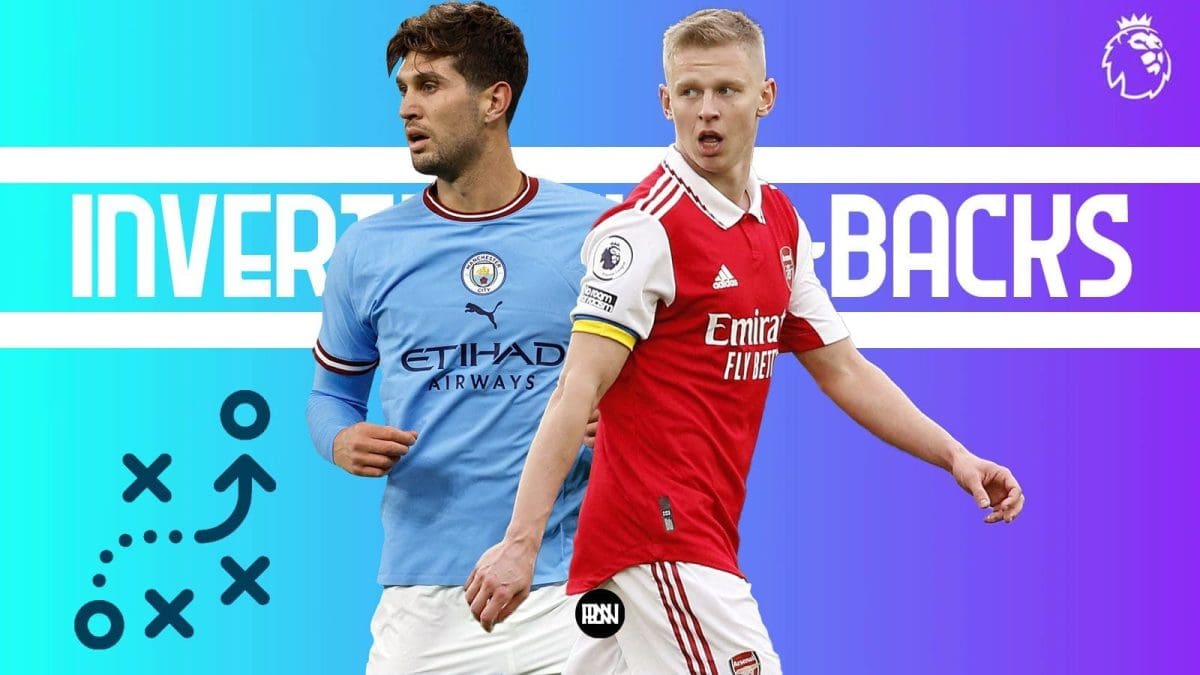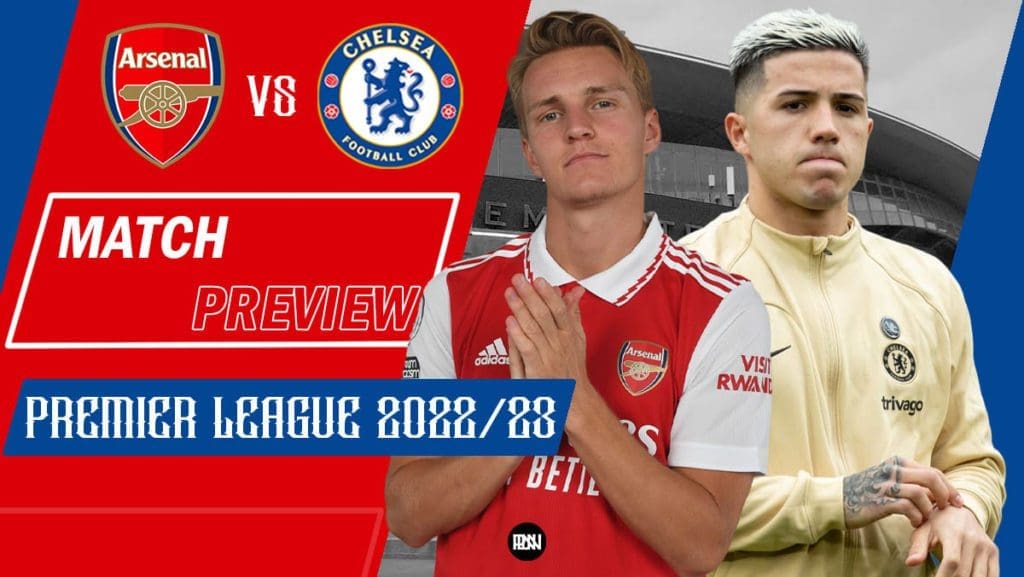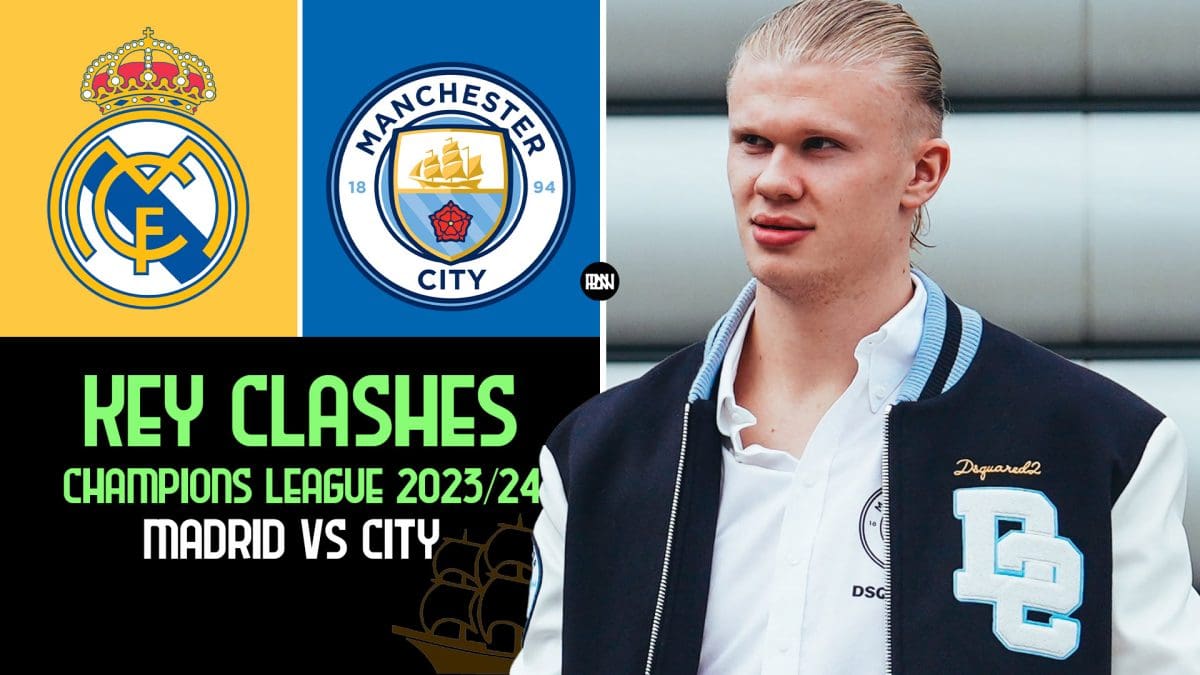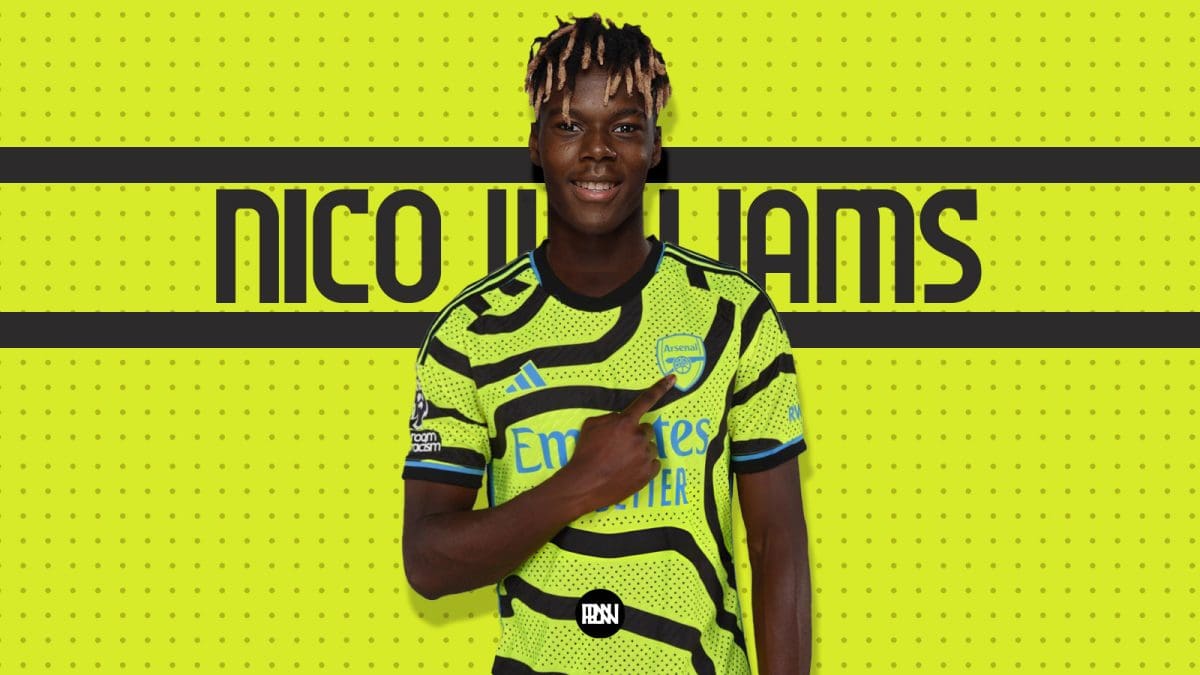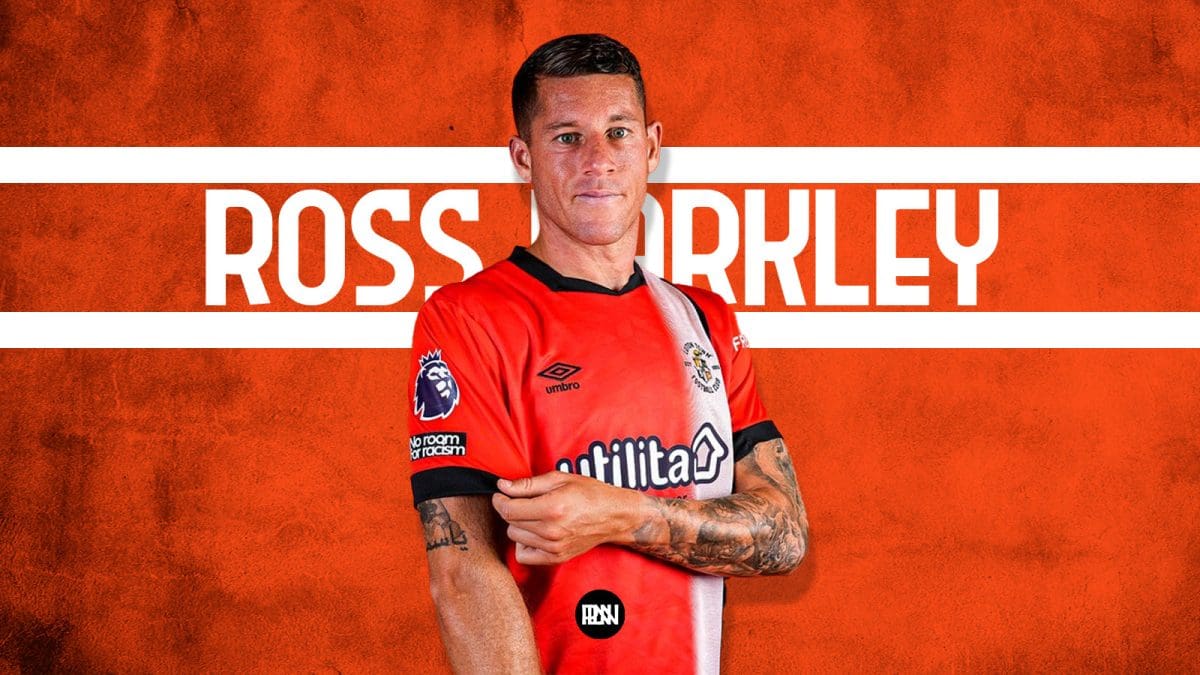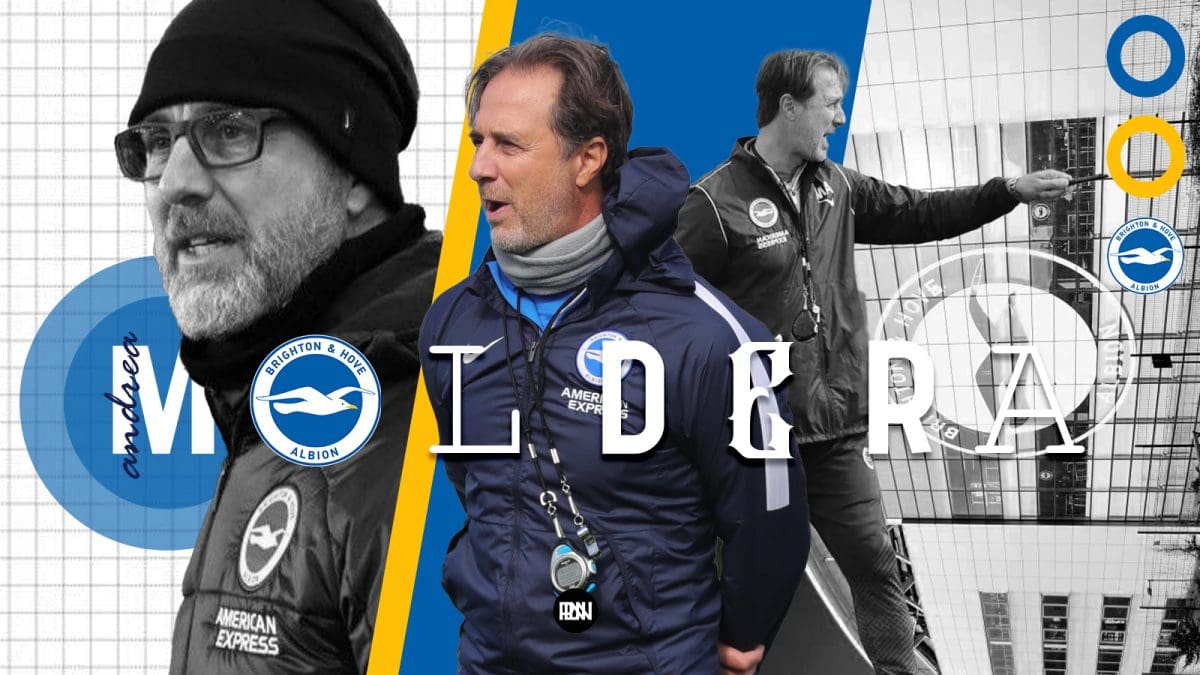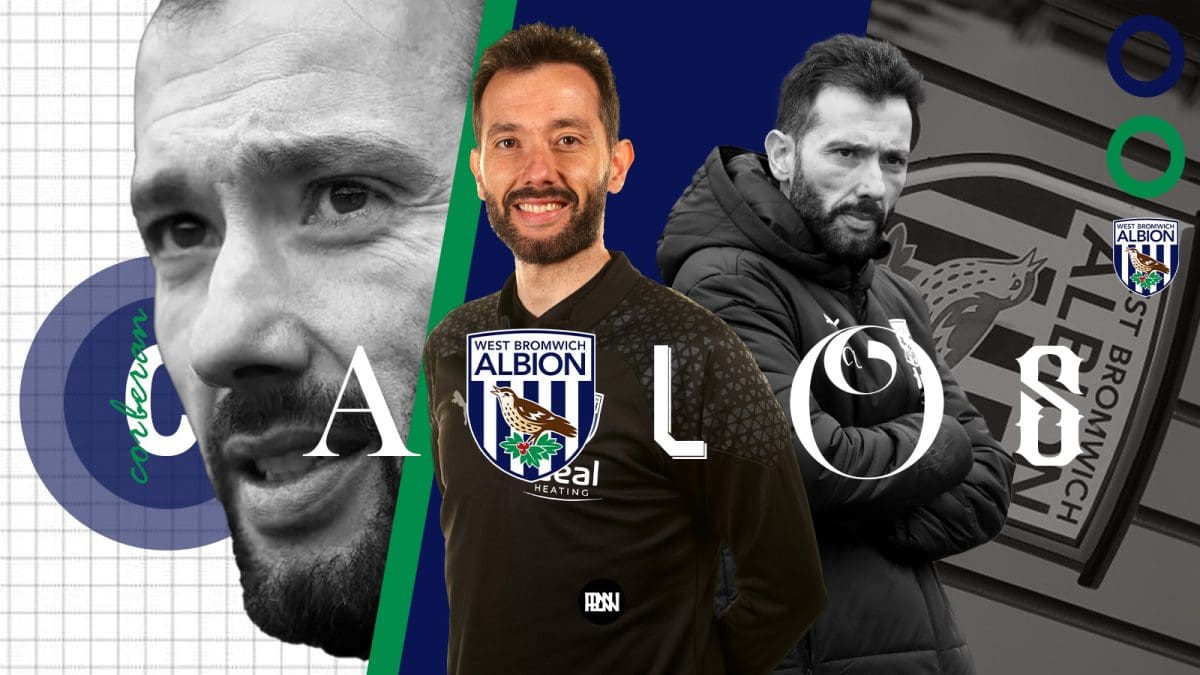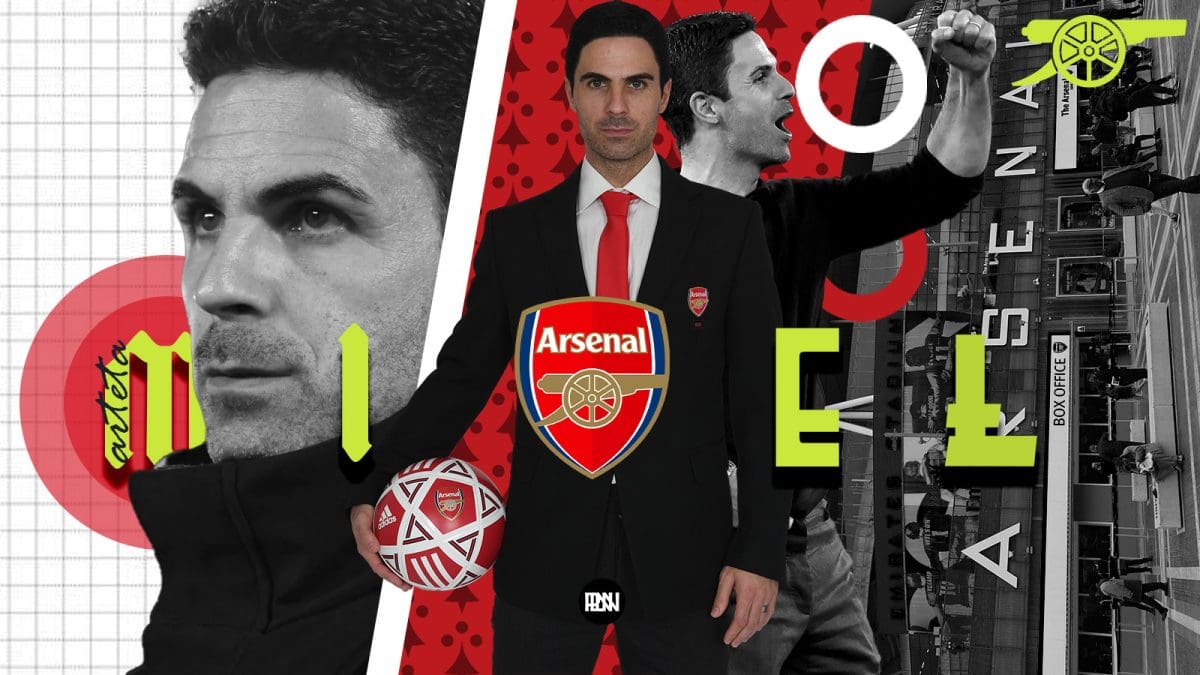Football is a sport that is in a constant state of evolution. Trends and fashions are frequently rethought, recycled, and even redefined to shape the tactics used by different teams. This often determines the importance of various player roles and how they are played. Over recent years, no position has undergone more significant changes than that of the fullback.
Traditionally, the fullback’s primary responsibility was to stay deep and prevent counter-attacks. However, in the 90s and beyond, a good modern fullback was expected to overlap with their winger and also possess the stamina to recover their defensive position. As a result, fullbacks operated in straight lines down the flanks and had minimal involvement on the ball. But now, the inverted fullback concept is becoming increasingly common, tucking in early to the center.
The trend has moved beyond just inverted fullbacks. Like grouping all central midfielders together, clumping players like Kyle Walker, Trent Alexander-Arnold, and Oleksandr Zinchenko into one category may be too simplistic. As a result, inverted fullbacks are starting to break down into clearer roles. Therefore, let’s examine why inverted fullbacks are currently in vogue.
Profile
Inverted fullbacks, rather than stay out wide, tend to invert into central regions of the pitch for advantages on and off the ball. Having extra men central means that they can first outnumber the opposition, make it easier to keep the ball in midfield regions. At the same time, the central midfielders now have more permission to move higher up the pitch earlier as the inverted fullbacks can help to do the midfield progression. Having this many numbers around the ball means that when the ball breaks, there is almost a connection for ball circulation, making it likely to break the opposition team and allowing them to maintain pressure on their opponents. At the same time, it also allows them to quickly surround the opposition to apply the counter-press in the center due to having so many numbers.
But the center of the pitch is a vast area, and to say that all inverted fullbacks just operates as interior centrally might be too broad. This brings us to the different types of inverted fullbacks, each with its own specific roles and responsibilities.
Defensive Fullback
The defensive inverted fullback tends to invert in the first phase of the game and in deeper areas of the pitch, which means that usually from left back or right back, they will instead tuck in to become the third center back. Compared to other types of inverted fullbacks, this one tends to be more limited on the ball and keeps things relatively simple when in possession. Having elite technical abilities as well as allowing their teams to have numerical superiority in the first phase, their role allows them to be more pertinent in the defensive phase. As such, we see many hybrid players who naturally can both play center-back and fullback occupying this sort of role due to their natural intelligence. When it comes to covering large amount of spaces, extremely pacey defenders with good physicality also fit well into this archetype due to their agility to cover when they’re counter-attacked.
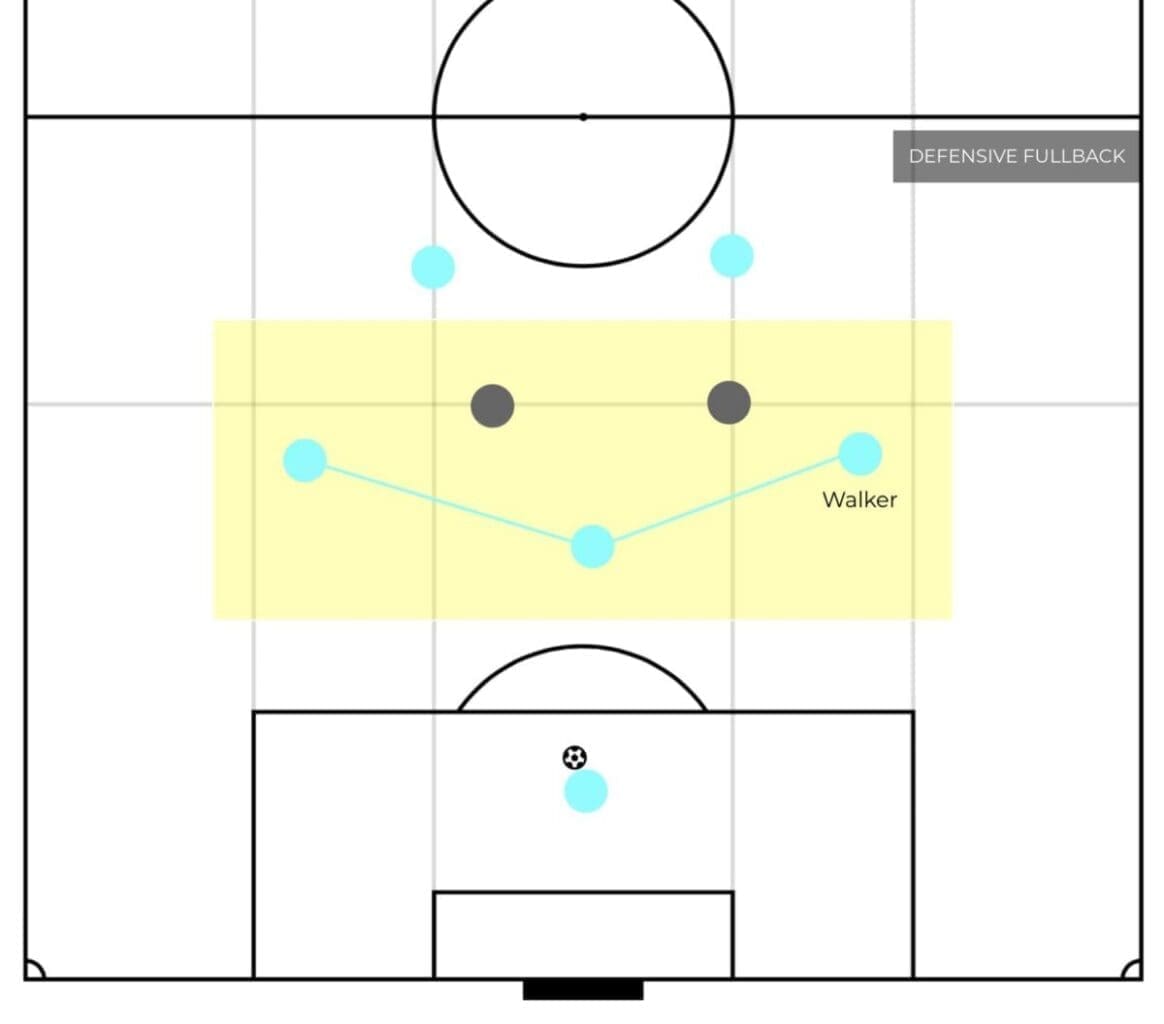
Pep Guardiola usually opts for a concept mentioned by Marcelo Bielsa where he talks about receiving in between the “door” which has been visible from Pep’s side for a while now. Kyle Walker operates as the 3rd centre-back in possession with the emphasis of creating numerical superiority in the first phase of build-up to overcome the first line of pressure from opposition. Initially, Walker positions himself in behind the space of opposition’s forwards and midfielders, trying to receive the ball between the gap. Through this concept, they start their progression phase with more fluid structure up front in the final third.
Not only Pep, but we have seen the defensive inverted fullbacks in teams such as Mikel Arteta’s Arsenal with Ben White and Julian Nagelsmann’s Bayern Munich with Benjamin Pavard.
Controller
The controlling inverted fullbacks tends to move into positions more traditionally occupied by the defensive midfielder or the pivot during the first phase. We have seen various iterations of this, either with two controlling fullbacks who allow the defensive midfielder to temporarily drop in to create a 3-2 structure in the first phase, or maintaining a 2-3 as well. These regions of the pitch tend to be difficult to operate in as high-pressing teams especially look to shut down the pivot as much as they can because the pivots tend to dictate the play.

That means to play as the controller, players have to be press-resistant to avoid giving the ball away in crucial zones. A high technical ability is also required, as well as being able to operate in small spaces using sharp passes and general awareness of where the opposition is, but where the deeper fullback can be much more conservative with the ball.
John Stones explains why he’s loving life in his new hybrid role under Pep Guardiola pic.twitter.com/glfuexXHT0
— Sky Sports Premier League (@SkySportsPL) April 14, 2023
John Stones and Oleksandr Zinchenko are two prototypical players in this mold. The controller often has to be more adventurous. Opposition teams will tend to occupy the natural pivot at all costs, as they tend to be much better on the ball, meaning that the fullback may be honored a lot more. So they have to be willing to carry the responsibility of breaking the lines and progressing the ball into players who have shifted higher up in the attacking phase.
Attacking Fullback
The final type of inverted fullback is characterized by a unique archetype and a closely related role known as the controller. These two roles often overlap, and in some cases, the same player may perform both roles depending on the team’s tactical approach for a particular match. However, this is not always the case, and different players may be assigned these roles depending on the situation.
This type of fullback is usually positioned centrally, much higher up the pitch, in the half space. They are often paired with a dangerous winger who is comfortable staying wider on the pitch. Their primary task is to use their exceptional technical skills to create scoring opportunities for their teammates. While their defensive abilities may not be their strongest suit, their primary role is to find their more dangerous winger or whip in dangerous crosses to the forwards.
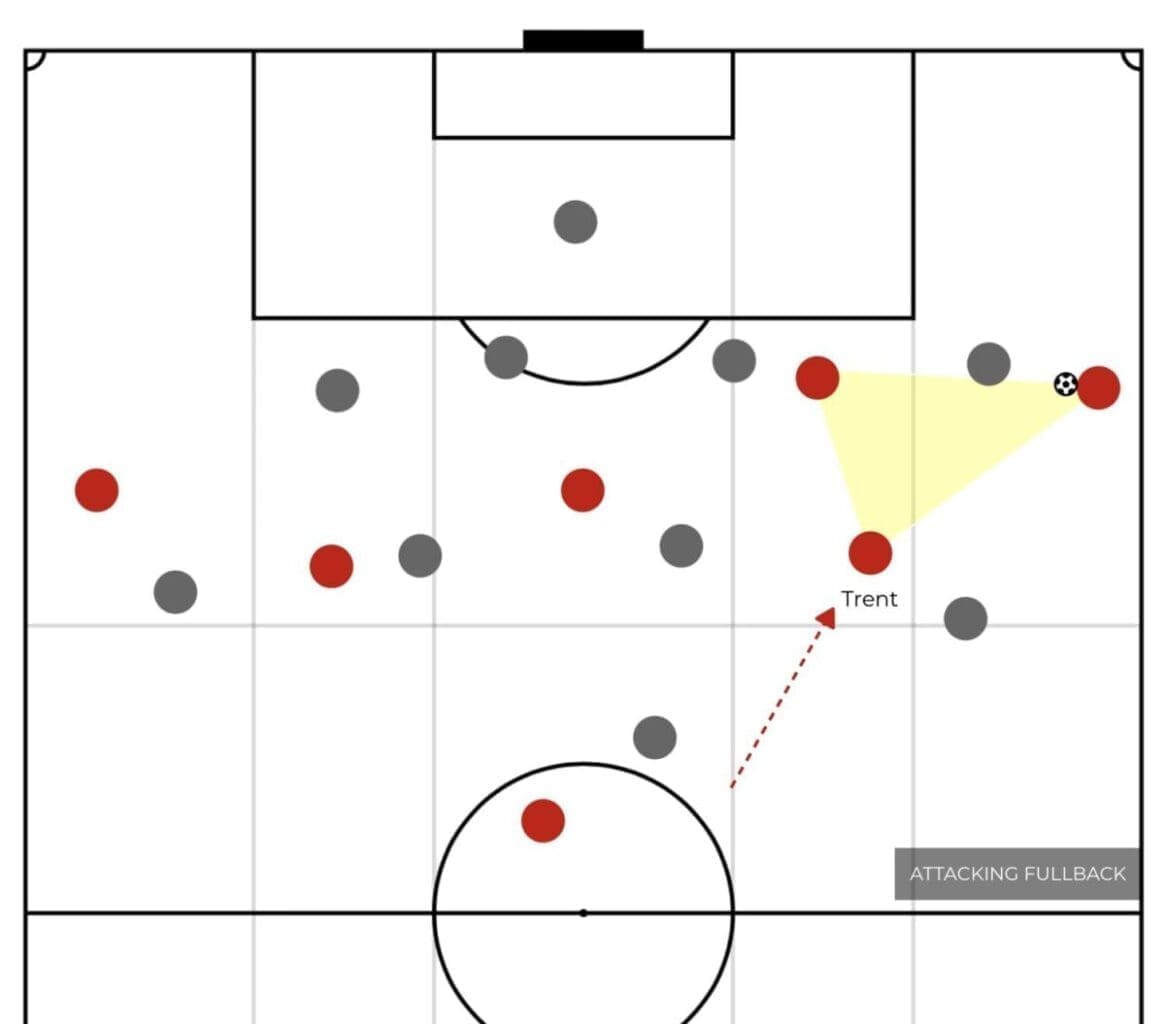
Trent Alexander-Arnold is one of the examples of this type of inverted fullback. In recent games, Jurgen Klopp changed his team dynamics and shifted to a more 3-2 structure with Trent in the midfield alongside Fabinho. It has bought some good results for Liverpool in recent weeks. Trent possesses the technical abilities to act as controllers, but also express his superior attacking qualities in the final third of the pitch. These kind of fullbacks are gifted with the ability to create several chances for their teammates and are crucial to their team’s success in the attacking third of the pitch.
Conclusion
The “inverted fullback” is a unique and versatile concept. The players performing this role are crucial to the success of their team. Their ability to perform multiples role is a valuable assest that can be used to exploit the weaknesses of the opposition.
Understanding the difference between various inverted fullbacks and their role can help coaches and players improve their overall game and make better tactical decisions to bring flexibility and unpredictable to their performance on the pitch.
MUST READ:
– Thomas Tuchel — Training Methodology
– The dangerous impact of media on English football
– How Environment plays an integral role in making players
– Valeriy Lobanovskyi: Pioneer of injecting data science & management in football
– How Kristjaan Speakman has transformed Sunderland


